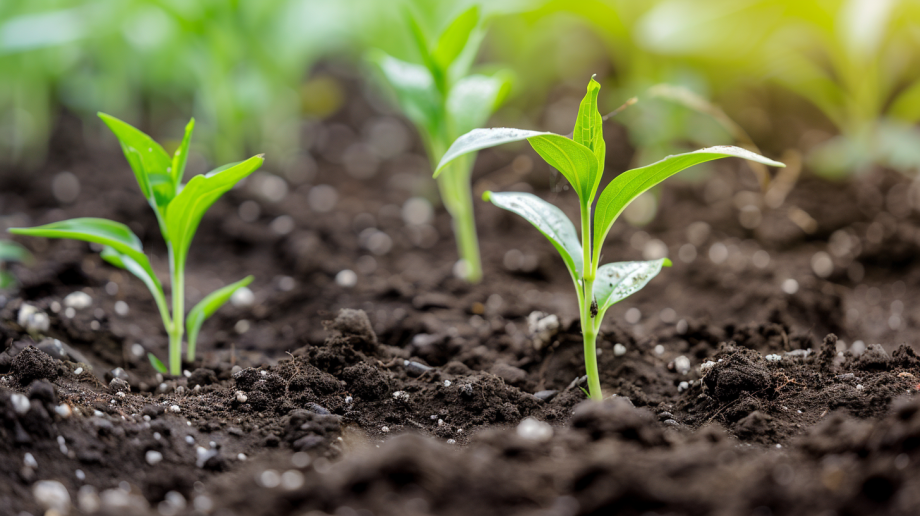
Plants That Grow Great in Sandy Soil
Your sandy soil, with its excellent drainage and quick temperature regulation, can be ideal for specific plants. Truly, lavender, yarrow, rosemary, and sedum genuinely thrive in such an environment. Likewise, coneflowers, attract pollinators and are drought-tolerant, offering a low-maintenance addition to your garden. Boosting your soil’s fertility with organic matter and using slow-release fertilizers can enhance growth. This soil can be transformed into a productive garden with tailored approaches including strategic plant choices and soil improvement methods. As you venture further into this wealth of knowledge, you’re all set to turn your sandy soil’s challenges into real opportunities.
Our Key Takeaways
- Plants like lavender, yarrow, rosemary, and sedum are highly adaptable to sandy soil conditions.
- Coneflowers, being drought-tolerant and attracting pollinators, are an excellent choice for sandy soil.
- Sandy soil provides excellent drainage and space for root development, ideal for less water-saturated plants.
- Enhancing sandy soil with organic matter like compost or manure can support plant growth.
- Drought-resistant plants like rosemary and lavender are ideal for sandy soil, requiring less frequent watering.
Understanding Sandy Soil
When exploring the domain of sandy soil, understanding its unique properties is essential. It readily crumbles into individual grains, has a light brown hue, feels grainy to the touch, and poses distinctive challenges because of the large size of its sand grains.
You’ll find that sandy soil, due to the vast spaces between its large particles, struggles to retain both water and nutrients. This is one of the inherent challenges of sandy soil, as it can impact the growth of plants.
However, not all is lost. With the right soil improvement techniques, you can turn these challenges into opportunities. By adding compost, peat moss, or manure, you can enhance the soil’s ability to retain essential nutrients and moisture.
Mulching is yet another effective technique, helping the soil moderate temperature, deter weeds, and as it breaks down, contribute organic matter to the soil.
Plant Selection for Sandy Soil
Having enriched your sandy soil with organic matter and proper watering techniques, you’re now ready to explore the variety of plants that will thrive in this environment.
You may wonder, ‘What plants grow in sand?’ or ‘What plants grow well in sandy soil?’. In your search for plants that grow in sand, you’ll find many wonderful options that are both beautiful and adapted to these unique soil conditions.
For instance, certain flowers that grow in sand, such as lavender and yarrow, are ideal, as they’re drought-resistant and love the excellent drainage that sandy soil provides.
In addition, rosemary, a culinary herb, and sedum, a succulent, are examples of plants that can grow in sand. They’re adept at surviving in the less nutrient-dense soil and can thrive with less frequent watering.
Moreover, you could also consider coneflowers, which aren’t only drought-tolerant but also attract pollinators to your garden. These plants that grow well in sandy soil are perfect for a low-maintenance and sustainable garden landscape.
Benefits of Sandy Soil
Despite its challenges, sandy soil offers certain advantages that can greatly benefit your garden. A major benefit of sandy soil is its excellent drainage which reduces the risk of waterlogging. This makes it an ideal environment for plants that grow well in sand, as they generally prefer less water saturation. Consequently, gardening in sandy soil can be quite rewarding if you choose the right plants for sandy soil.
Another advantage of sandy soil is its temperature regulation. It warms up quickly in the spring, giving your plants a head-start on growth. This can be particularly beneficial for early-blooming plants in sand, or for extending the growing season of certain vegetables.
Sandy soil also provides ample space for root development. This loose, well-aerated soil allows roots to penetrate deeply and spread widely. This not only anchors your plants firmly but also enables them to access more nutrients and water, leading to healthier, more robust growth.
Lastly, sandy soil is relatively easy to work with, being light and crumbly. This makes it easier for you to plant, transplant, and cultivate your garden. With the right choice of plants that grow well in sand, your sandy soil garden can be a thriving, verdant oasis.
Soil Improvement Techniques
To improve the productivity of your sandy soil garden, various soil enhancement techniques can be utilized, starting with the amendment of the soil. To amend sandy soil, incorporate organic matter such as compost, peat moss, or well-rotted manure. This action will enhance the soil’s capacity to retain both water and essential nutrients.
Subsequently, apply mulch to sandy soil. A layer of organic mulch, like straw or wood chips, can assist the soil in retaining moisture, regulating soil temperature, and suppressing weed growth. As the mulch breaks down, it will gradually add more organic material to the soil.
Because of its quick-draining quality, sandy soil necessitates frequent watering. However, keep in mind that deep watering is more advantageous than frequent shallow watering. This method promotes the development of deeper roots, rendering your plants more resilient to drought.
For fertilizing sandy soil, choose a slow-release fertilizer. Sandy soil lacks the capacity to retain nutrients, requiring regular fertilization.
Lastly, monitor soil moisture consistently using a moisture meter and closely observe your plants’ well-being. Adjust your watering and fertilization methods accordingly to maintain a flourishing garden.
Challenges of Sandy Soil
Tackling the challenges of sandy soil can feel like trekking through a desert, but understanding these obstacles can help you cultivate a thriving garden.
One of the primary sandy soil challenges is its low nutrient retention. The large, coarse particles have significant spaces between them, allowing water and nutrients to seep through quickly. This means your plants may not get the sustenance they need before it drains away.
Another challenge is that sandy soil dries out quickly. It’s thirsty soil that requires frequent watering to stay moist. But be cautious, watering sandy soil too often can lead to another issue: soil erosion. The loose structure of sandy soil makes it prone to displacement by water and wind.
These challenges may seem overwhelming, but they’re not insurmountable. By understanding the nature of sandy soil, you’re one step closer to creating a garden that flourishes despite these obstacles.
Tips for Gardening in Sandy Soil
Exploring the sandy terrain of your garden need not be a challenging task; with the right techniques and approaches, you can turn your sandy soil into a plant paradise. Understanding the inherent characteristics of sandy soil is the first step in sandy soil gardening. Its light, grainy structure might pose some sandy soil challenges, but strategic plant selection for sandy soil can turn this around.
You’ll want to opt for drought-resistant and sand-loving plants such as rosemary, lavender, and yarrow. These plants aren’t only resilient but can add beautiful splashes of color to your garden landscape.
Improving sandy soil is essential to guarantee it retains more nutrients and water. You can enrich your sandy soil by incorporating organic matter like compost, peat moss, or manure. This will enhance the soil’s fertility and water-holding capacity, making it more hospitable for your plants.
Seek Professional Help
While you can certainly take steps on your own to improve your garden’s sandy soil, don’t hesitate to seek out expert assistance for a more thorough and all-encompassing approach. Expert teams, such as The Grounds Guys, are equipped with the necessary knowledge and tools to make your gardening endeavor a success.
These specialists can conduct detailed soil testing, which provides a comprehensive analysis of the nutrient content and pH level of your soil. This information is essential for understanding how best to amend your soil to create the ideal environment for your plants to thrive.
Furthermore, professional teams can advise on and apply suitable soil conditioners. Soil conditioners can significantly enhance the fertility of your sandy soil by improving its structure and increasing its ability to hold water and nutrients. These amendments can also help to regulate the soil’s pH level, making it more conducive for plant growth.








